
Insurance customer onboarding: your carefully nurtured lead has said “yes” to your offer. Hurray! The deal is done, but the journey has just begun.
New customers don’t stop shopping around just because they’ve chosen an insurance plan. While they might renew their contract, leave a positive review, or refer other clients, they will always have an eye on your competition.
You can’t force insurance customers to stay loyal, but you can incentivize them with a seamless onboarding experience. A well-structured onboarding process builds a trusting, long-term relationship, while a poor experience increases churn.
Below are eleven proven tips to enhance your insurance onboarding process and optimize retention.
1. Set the Tone With Automated Communication
The first thing your new insurance clients hear from you will set the stage for your relationship going forward. It’s safe to say this first message is crucial — which is why you want to use automation to send it as soon as new clients sign up.
You don’t need to be overly formal or detailed in this message. Instead, try including:
- A greeting to welcome the client. For example, “welcome to (brand)” or “hello (name), it’s great to meet you.”
- A relationship-building statement to make the client feel valued. For example, “we’re excited to start our journey together” or “thank you for choosing (brand).”
- A statement introducing the client to your brand and validating that they made the right investment. For example, “(brand) helps thousands of small business owners like you protect their businesses against disaster. We offer (insert your plan’s features here).”
- A Call-To-Action (CTA) to push the client to continue the onboarding process. For example, “please click here to see your insurance onboarding checklist” or “let’s begin!”
Here’s an example of an automated welcome email from Canstar.
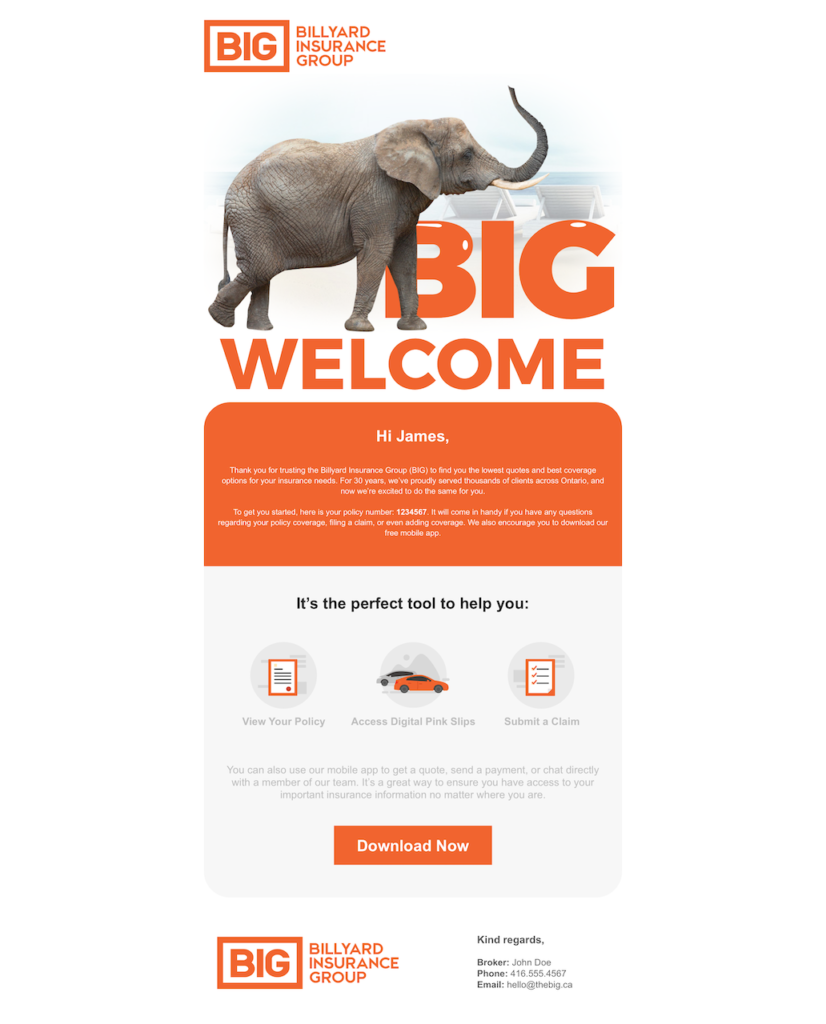
Personalize the Onboarding Experience
When your insurance clients call your customer service agents and salespeople, they expect a certain amount of personalization. For example, they expect your staff to address them by name, and they expect the conversation to feel natural and friendly.
The same is true for digital communications.
In the U.S. and the UK, a Statista study of 1,000 people found that 42% of consumers see digital personalization as “very important” or “somewhat important.” Only 10% feel it’s “not important at all.”
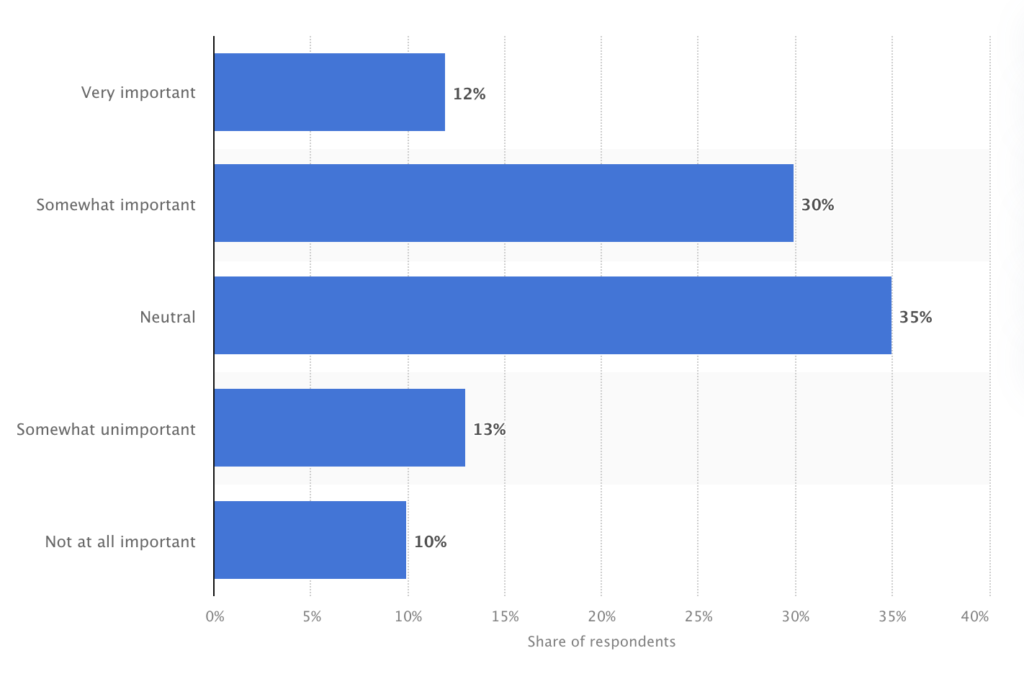
Your clients like personalization because it helps them feel recognized and valued as individuals, not numbers.
So, how do you provide a personalized experience?
Start by addressing all your client communications to the individual by name. Or, if your client is a business, address communications to the contact person.
Next, spice up your communications with warm and friendly touches. Try emotive language, a conversational tone, animations, gifs, images, or even emojis (depending on your branding).
Or, if you are using a live chat or a callback service, introduce clients to their customer service agent. Pathway does this — you always know the name and face of the person you’re speaking to.
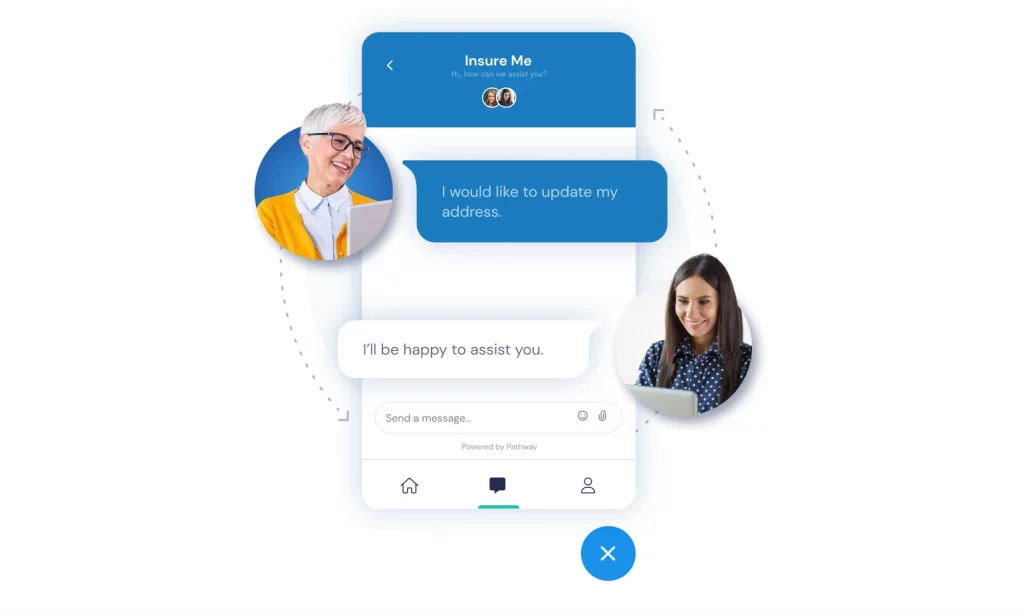
Finally, divide your clients into segments and only send targeted content that’s personalized to each segment. For example, only update clients on a particular plan about plan-specific adjustments or only send clients with vehicle insurance car-specific marketing emails.
If it isn’t relevant to your client, don’t waste their time with it.
Provide a Comprehensive Welcome Brochure
Some insurance clients feel a tad overwhelmed when they onboard, as they have important documents to complete, a new insurance process to adjust to, and a self-serve kiosk to learn to use.
You can help them navigate the onboarding process smoothly by providing a welcome brochure. A welcome brochure tells new clients everything they need to know and shows them where to find high-quality information when they need it.
Here are some things to add to your welcome brochure:
- An introduction to your company (including your history, mission, and goals)
- An onboarding video to introduce the lead to your brand
- A detailed explanation of their plan
- How to use your self-service system
- An explanation of how to find help (including how to use your knowledge base and reach customer support)
- Links to educational content (including blog posts, articles, tutorial videos, and your Frequently Asked Questions (FAQ) section)
- Testimonials from happy customers
For best results, create a personalized welcome brochure for each insurance plan and send new clients their plan’s brochure. This way, you won’t overload clients with content that’s not relevant to them.
Nurture Clients, Don’t Rush Them
It may seem easy for clients to complete the onboarding process, but you never know what your clients are doing behind the scenes. They may have an internal work crisis to deal with, a new staff member to train, or a workload that’s consuming every second of their busy workday.
To avoid becoming another stressor on their to-do list, nurture your new clients rather than pressure them.
One great nurturing technique is setting up an onboarding checklist that breaks the process into small, manageable tasks. This checklist should be fully self-guided so people can complete tasks at their own pace — like in this client onboarding checklist from Zapier:
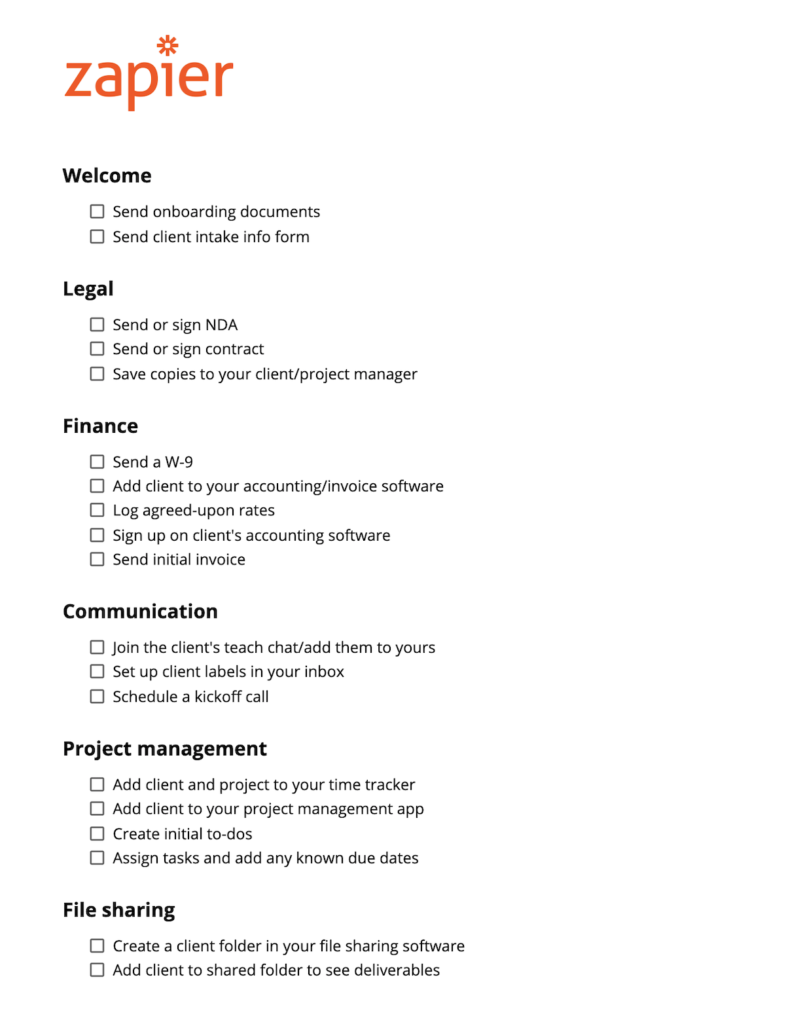
To maximize the chances your clients will complete the checklist, limit your list to only the most important action items. All non-essential tasks (like reading your blog or looking at your knowledge base, for example) can go into an “optional” section at the end.
Or, if your salespeople want to onboard clients over the phone, another great nurturing technique is giving the onus to communicate to your clients. Equip them with a booking tool and let them book phone, video, or face-to-face consultations at a time and date that works for them.
Be Accessible to Help Insurance Client Onboard With Ease.
It doesn’t matter how easy you make the onboarding process: someone will always get stuck and need help. And when that happens, you want to be there to support them quickly so your new clients don’t feel ignored.
“Quickly” in this context means within the same day (but likely faster). A SuperOffice and Jeff Toister study on 3,200 consumers from the U.S. and UK found that 46% expect companies to answer their queries in four hours or less, and 11.3% expect a response in 15 minutes.
Meeting this deadline may seem impossible, but it’s easier than you think. You can reduce your response time by using multiple platforms, including:
- Live chat
- Phone
- VoIP or video calling
You can also provide self-service options like a chatbot, guided tutorials, a knowledge base, and a FAQ section. These options allow clients to solve common problems without speaking to anyone. They’re also accessible 24/7.
Maintain a Transparent Billing Process
Being transparent with new customers throughout the onboarding process will help them understand their obligations and your responsibilities. This fact is especially true with billing.
To build a transparent billing process, tell your new customers upfront when payments are due and how much they owe each time. You also might like to offer calendar reminders or payment notifications with a tool like Marketing Automation For Insurance, as these will help clients remember to make their payments.
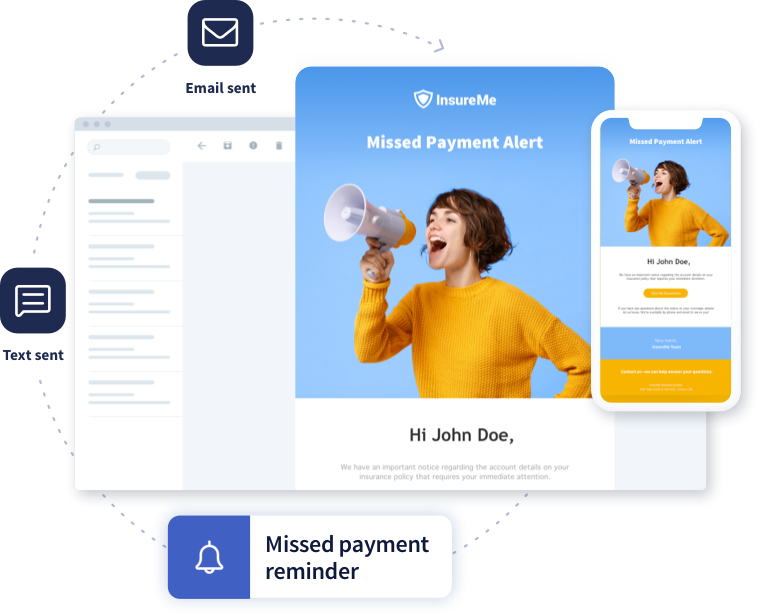
Additionally, use a transparent pricing model. If your pricing structure is difficult to understand, clients may feel you’re hiding something from them.
If you charge penalties or cancellation fees, tell your customers as they onboard so these don’t come as a nasty shock. If you hit clients with an unexpected payment, it will sour the trusting relationship you’ve built with them.
Leverage Technology for a Seamless Experience
In previous decades, many of the administration tasks insurance companies performed had to be done by hand — including filing documents, client communication, and insurance agency marketing.
These repetitive tasks required manpower, resources, and time from busy agencies that would rather spend time with clients.
Today, agencies can get that time back by leveraging technology. For example, you can use:
- Email marketing software. This software can send emails automatically, track email marketing metrics, and maintain your email subscriber list. Pathway’s Marketing Automation For Insurance Bot also has this functionality.
- Customer Relationship Management (CRM) tools. These tools monitor and improve communications with clients.
- Document processing tools. These transmit and file digital documents for you. PathwayPort helps insurance brokers and agents send and automate electronic documents via e-delivery.
- Workflow automation tools. These help you schedule work tasks, manage to-do lists, and prioritize tasks so you can work more efficiently. Check how PathwayPort leveraged workflows with marketing automation for insurance.
Form builder tools like Pathway’s Form Builder. These tools help you create custom forms so you don’t need to rely on paper ones.
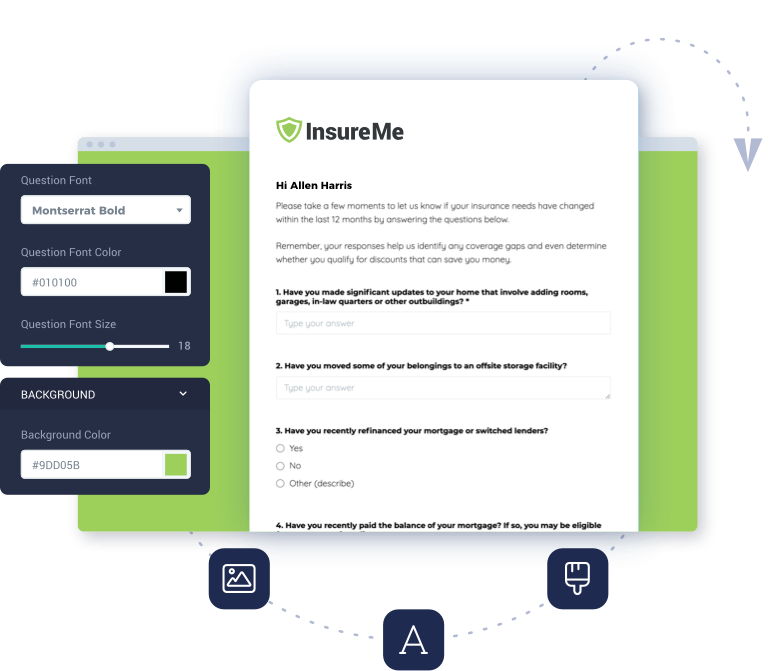
Show Gratitude to Build Loyalty
Just like clear communication and respect, gratitude is essential in building a trusting relationship with insurance customers. A simple “thank you” makes clients feel valued and appreciated—two key emotions that drive long-term loyalty.
There are many great moments to express gratitude—whether at the end of a marketing email or the beginning of a customer service call. However, one of the most impactful times is during the customer onboarding process.
🔹 Automate Thank-Yous in Onboarding
Ensure your system thanks clients after they complete each onboarding step. A warm welcome message that expresses appreciation can set the tone for a positive experience.
🔹 Go the Extra Mile with a Gift
Enhance your onboarding by offering a small thank-you gift:
✔ A discount on their first month of coverage.
✔ A $10 e-gift card as a token of appreciation.
These small gestures strengthen relationships and boost customer satisfaction.
🔹 Seamless Onboarding with Branded Templates
A beautifully designed onboarding email template enhances professionalism and builds trust. With 500+ customizable email templates from PathwayPort’s library, you can streamline the insurance customer onboarding process and create a frictionless experience.
📌 Make every new client feel appreciated from day one. A smooth onboarding process with the right communication can turn new customers into lifelong policyholders.
Maintain Regular Client Communication
If you make customers feel like you forgot them during the onboarding process, they will reflect that energy onto you. So, to keep clients engaged in the process, maintain a continuous stream of communication.
You don’t need to email or text clients daily. Instead, use different mediums to reach out to them at key intervals. For example, you could:
- Send follow-up emails reminding clients to complete key tasks
- Have a sales representative call the client a few days after their coverage has started to ask if they have any questions or need assistance
- Send an SMS message with updates (like the day their coverage started, payment confirmations, claim updates, etc.)
- Send reminders via your self-service kiosk
To free your sales team from repetitive tasks, automate your insurance operations and allow them to focus more on closing deals.
PathwayPort provides insurance marketing automation tools to help you:
✅ Close More Deals Faster – Boost conversions with automation.
✅ Reduce Manual Work by 80% – Free your team from time-consuming tasks.
✅ Achieve 95%+ Client Retention – Keep customers engaged effortlessly.
✅ Increase Upsell & Cross-Sell Conversions by 50% – Maximize revenue opportunities.
Start streamlining your sales process and scaling your brokerage today! 🚀
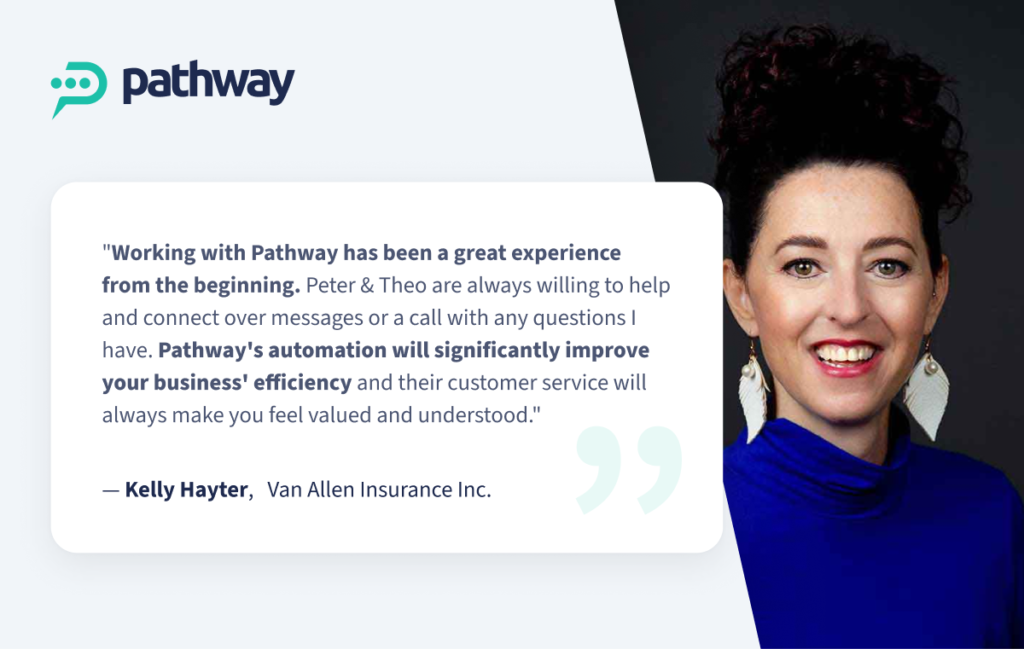
Proactively Notify Clients About Policy Updates
Some clients don’t like change, which can make informing them of updates to their insurance plans tense. To make it easier, be proactive and give clients ample notice when you need to adjust:
- A plan’s scope and features
- Pricing
- Changes to your internal systems or processes
These emails should cover all changes and how they will impact clients clearly — like in this example from Pacific Cross Insurance.
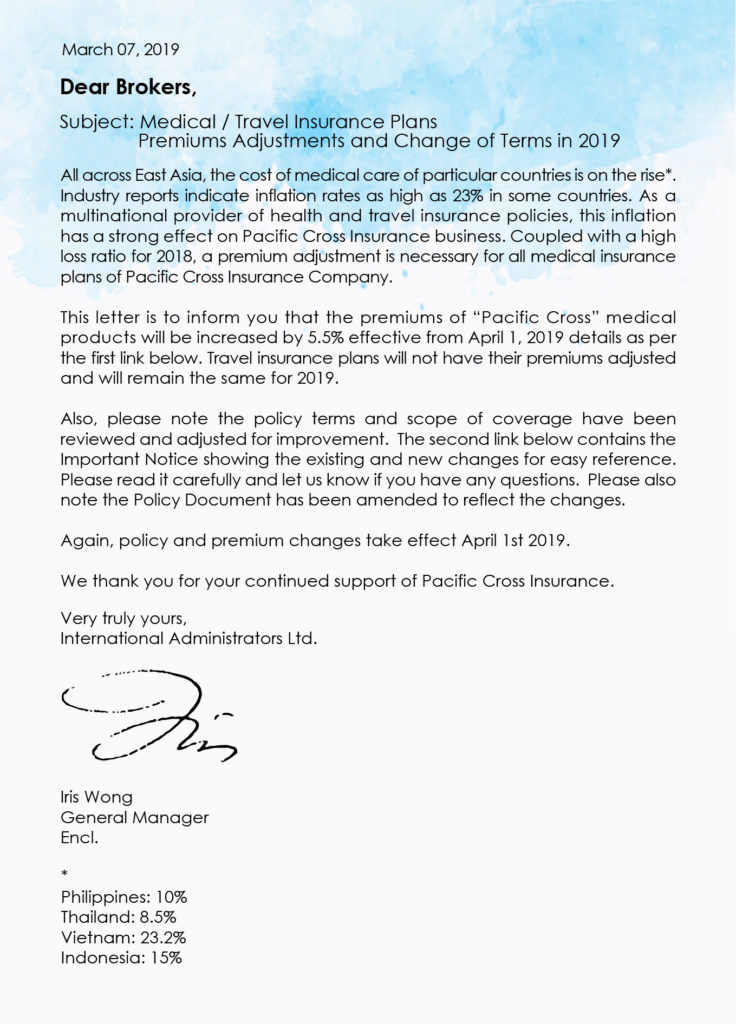
This tip isn’t onboarding specific, but you should lay the groundwork for it during the onboarding process. Tell new clients when and where to expect updates when they join so they know to watch for them.
Optimize for a Seamless User Experience
Finally, consider how seamless your onboarding process is by looking at how each element works together.
Are there multiple areas where clients need to provide the same information? Is a particular widget slow and unintuitive to use? Is the wording in a process convoluted or confusing? Are your internal links slow? These issues may seem small, but they will frustrate new clients and decrease their satisfaction with the onboarding experience.
Go through the onboarding process yourself, identify frustrating or annoying elements, and fix them. Don’t forget about your clients’ opinions, either — ask for feedback on improving your onboarding processes and implement common suggestions.
Onboard Your Insurance Customer the Right Way with Pathway!
Onboarding new insurance customers successfully will build trust, thus reducing client churn, increasing sales, and growing your loyal client base.
To set up a successful insurance onboarding process, make sure you introduce your brand warmly, send customers all crucial information upfront, show gratitude, maintain contact, and use insurance marketing automation tools to your advantage.
One such tool is PathwayPort, an all-in-one insurance automation tool that can help you make your insurance marketing, sales, and onboarding process seamless. PathwayPort offers:
- Office Bot, which automates billing and other administration tasks
- Marketing Bot, which handles smooth insurance marketing
- Self-Service Kiosk, which your clients can use to self-manage
- Form Builder, which makes insurance documents fast and easy to complete
Sign up today to try Pathway’s insurance automation solution.
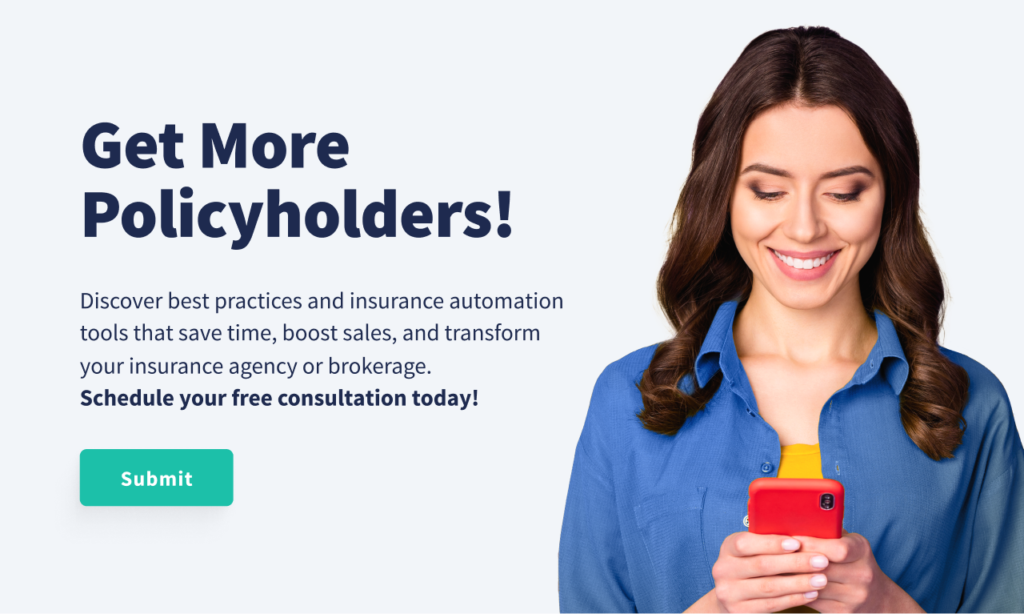
Why a Great Insurance Onboarding Process is Essential
A well-structured customer onboarding process is crucial for insurance companies, directly impacting client retention, sales growth, customer satisfaction, and operational efficiency. Here’s why it matters:
1. Enhancing Customer Retention
The insurance industry experiences an average client retention rate of 84%. Implementing an effective onboarding process can improve customer retention by over a third (37%), leading to increased loyalty and reduced churn.
2. Boosting Profitability
A 5% increase in customer retention can elevate a company’s profits by 25% to 95%. Given that acquiring new policyholders costs 7-9 times more than retaining existing ones, a strong onboarding process is a cost-effective strategy to enhance profitability.
3. Meeting Customer Expectations
A significant 74% of potential customers are likely to switch to a competitor if the onboarding process is too complicated. Moreover, over 90% of customers feel that companies could improve their onboarding procedures. Addressing these expectations through a seamless onboarding experience is crucial for customer satisfaction.
4. Leveraging Technology for Improved Retention
Integrating technology into the onboarding process can enhance the overall customer experience by up to 43% and increase customer retention by 37%. Digital tools streamline onboarding, making it more efficient and user-friendly.PropertyCasualty360
5. Strengthening Brand Loyalty
An effective onboarding process fosters trust and confidence, leading to long-term customer relationships. Notably, 86% of customers are more likely to remain loyal to a business that invests in onboarding content that educates and welcomes them post-purchase.
In conclusion, investing in a comprehensive and efficient onboarding process is essential for insurance companies aiming to enhance customer retention, boost profitability, meet customer expectations, leverage technology, and strengthen brand loyalty.


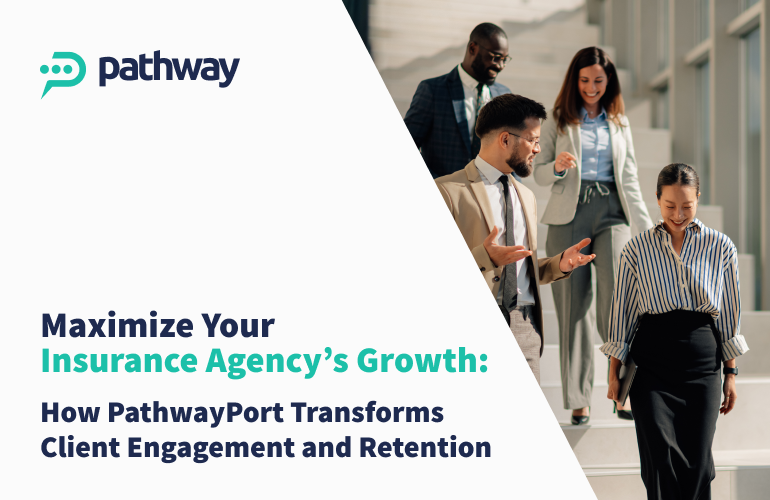


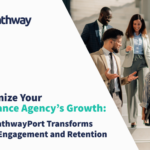
Leave a Comment